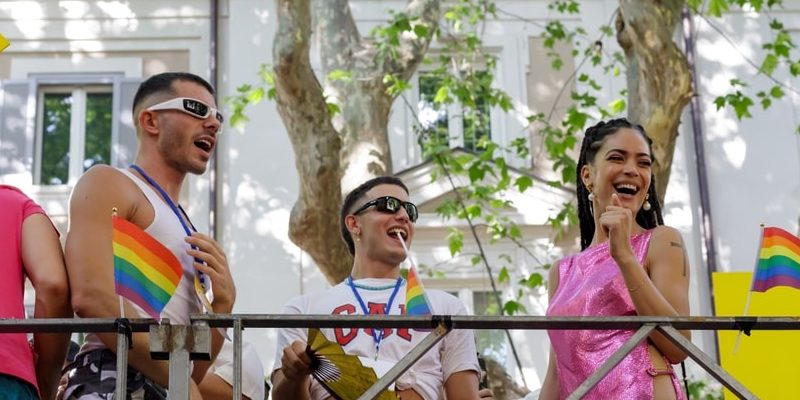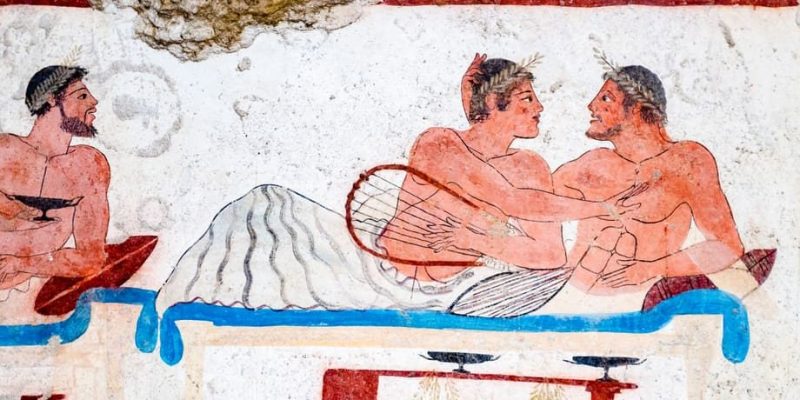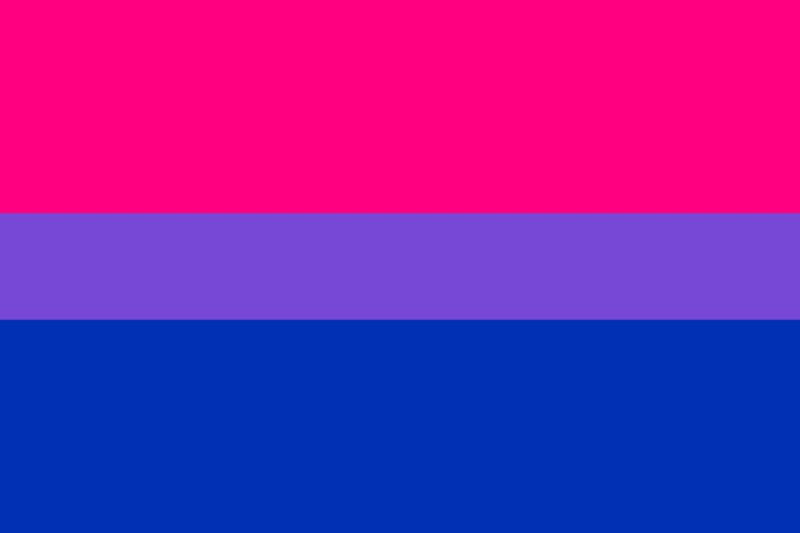We explain what bisexuality is and how its presence was throughout history. In addition, we tell you what sexual orientation is.

What is bisexuality?
Bisexuality It consists of sexual, erotic and/or romantic attraction for people of both the own sex and the opposite sex. That is, bisexual or “bi” people are those whose sexual orientation leans towards men and women, so they can establish both heterosexual and homosexual loving relationships.
As with other sexual orientations, bisexuality It is not absolute nor does it occur to the same degree in all people or in all moments of their lives. It is common for bisexual people to feel a greater degree of attraction to one sex or the other, and in some cases they may feel more identified with other ways of thinking about sexual orientation, such as pansexuality or polyamory. Many agree to think of bisexuality as a spectrum of possibilities intermediate between homosexuality and heterosexuality.
Based on the questions and new ways of thinking about sexual orientation and gender identity that have emerged in the 21st century, bisexuality can be difficult to distinguish from other categories, especially when it comes to non-binary gender identities. It should be considered, then, that the term “bisexuality” was created in the 19th century, as well as the terms “heterosexuality” and “homosexuality”, which does not mean that bisexual people did not exist previously.
It is difficult to know what percentage of the human population is bisexual. Studies carried out by the American sexologist Alfred Kinsey (1894-1956) in the mid-20th century concluded that around 46% of the male population interviewed had participated in sexual acts or reacted erotically to people of the same sex throughout their lives. , but that doesn't mean they considered themselves bisexual. Furthermore, Kinsey found the term “bisexuality” inappropriate and used it rather as a synonym for hermaphrodite (today “intersexual”).
On the other hand, later studies, at the beginning of the 1990s, showed that only 5% of the men and 2% of the women interviewed considered themselves bisexual; and other similar measurements in 2014 reduced the figure to 0.7% of US citizens interviewed.
Bisexuality in history

Bisexuality has a long presence in the history of civilization, especially in certain ancient cultures, such as the Greek, in which sexual and loving relationships were not considered based on a strict binary division, but rather there was a certain fluidity regarding love and attraction.
Greek heroes of mythology could have male lovers (like Achilles and Patroclus, as described in the Iliad) and at the same time have female consorts and long descendants. In some Greek cities, such as Sparta, erotic relationships between experienced and novice soldiers were normal, as they fostered the cohesion of the army and the heroism of the warriors who fought arm in arm with their lovers.
For its part, In Ancient Rome, both heterosexual and homosexual attraction of free men was an ordinary matter as long as they were the ones who played the active role in intercourse, and sexual morality was determined more by social class than by the gender of those involved. Even so, once married, a man was expected to have sexual relations with his wife, especially for procreative purposes, or with slaves, prostitutes, or infamous people (citizens who had lost certain rights).
In modern times, however, bisexuality has continued to exist, but always outside of traditional family and moral considerations, heirs of the Christian legacy. With the sexual revolution of the 20th century, this sexual orientation reached a certain level of notoriety although always under the stigma of promiscuity, sexual indecision or perversion. These considerations are currently considered an example of “biphobia”, that is, a pathological aversion towards bisexuality.
At the end of the 20th century and the beginning of the 21st, the bisexual community became part of the homosexual movements (gays and lesbians) and transsexuals, which gave rise to the LGBT collective, dedicated to fighting for social acceptance and legal recognition of sexually diverse people and people with non-traditional sexual orientations.
Bisexuality flag

At the beginning of the 21st century, the organized bisexual community created an icon to recognize itself socially and provide oneself with a certain notion of shared identity: the flag of bisexuality. Along with the bisexual triangles (two inverted equilateral triangles, one fuchsia and the other magenta), the bisexual pride flag is the main icon of social and political identification of this community.
The bisexual flag consists of a rectangle divided into three segments, the first and third considerably larger than the middle one, and the three colored magenta, lavender and blue respectively. This color combination represents attraction to the same sex (magenta) and the opposite sex (blue), intermediated by a lavender stripe that represents bisexuality in general.
Bisexuality and pansexuality
In some cases, bisexuality and pansexuality can be interpreted as similar categories, since the difference between one and the other can be subtle, especially if it is not considered within the framework of gender identities that emerged at the beginning of the 21st century. In a strict sense, Bisexuality consists of sexual and romantic attraction to people of the same gender identity as well as the opposite gender identity. Which is traditionally interpreted as sex with cisgender men and women.
But from the moment transsexuality and non-binary people are introduced into the equation, the term “bisexual” seems too narrow, and that is when it appears. pansexuality, understood as sexual attraction to people of the same sex and the opposite sex, regardless of their gender identity (trans, cis or non-binary).
What is sexual orientation and what determines it?
“Sexual orientation” is the name given the general tendency of people in their sexual, erotic and romantic lives. In other words, what type of people that person feels sexually, erotically and romantically attracted to. There are, traditionally, three recognized sexual orientations:
- Heterosexual. Typical of people who are attracted to individuals of the opposite sex.
- Homosexual. Typical of people who are attracted to individuals of their own sex.
- Bisexual (or pansexual). Typical of people who are attracted to individuals of both their sex and the opposite sex.
sexual orientation is not equivalent to gender identity which is the psychological or subjective consideration one has of one's sexuality and the gender role one plays in society.
Regarding what factors determine one or another sexual orientation, experts in psychology and other human sciences have not been able to reach any consensus on the matter. Simply, It is not known if the determining elements in sexual orientation are innate are fixed during upbringing or are somehow voluntary.
Continue with: Diversity
References
- “Bisexuality” on Wikipedia.
- “What causes sexual orientation?” at Planned Parenthood.
- “Some believe that bisexuality is a fetish, like you are willing to do anything” in BBC News Mundo.
- “Bisexual” in Free and Equal of the United Nations (UN).
- “What does it Mean to be Bi or Bisexual?” in Healthline (USA).
- “Understanding Bisexuality” in the American Psychological Association (APA).





